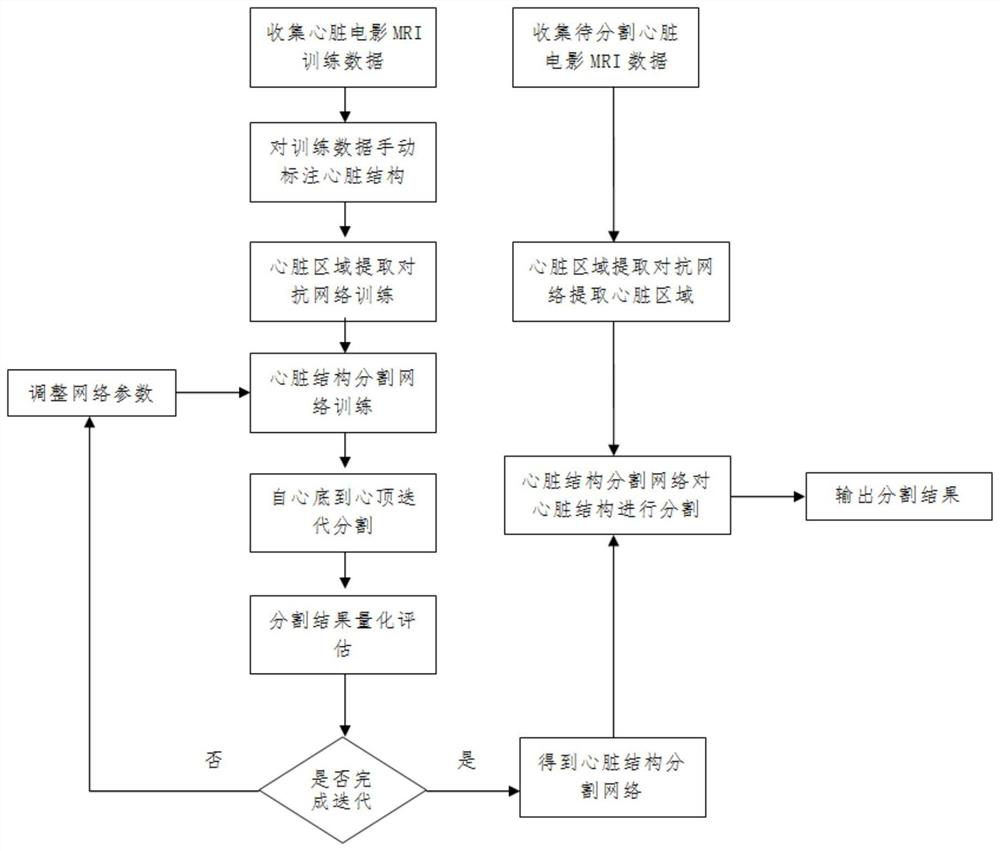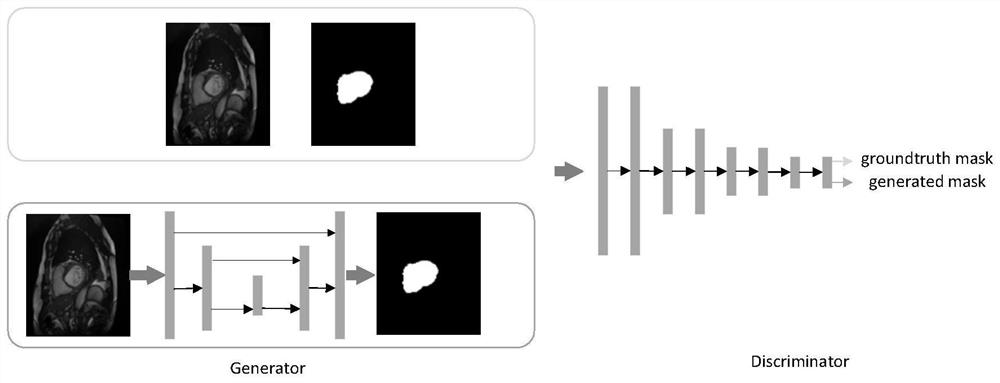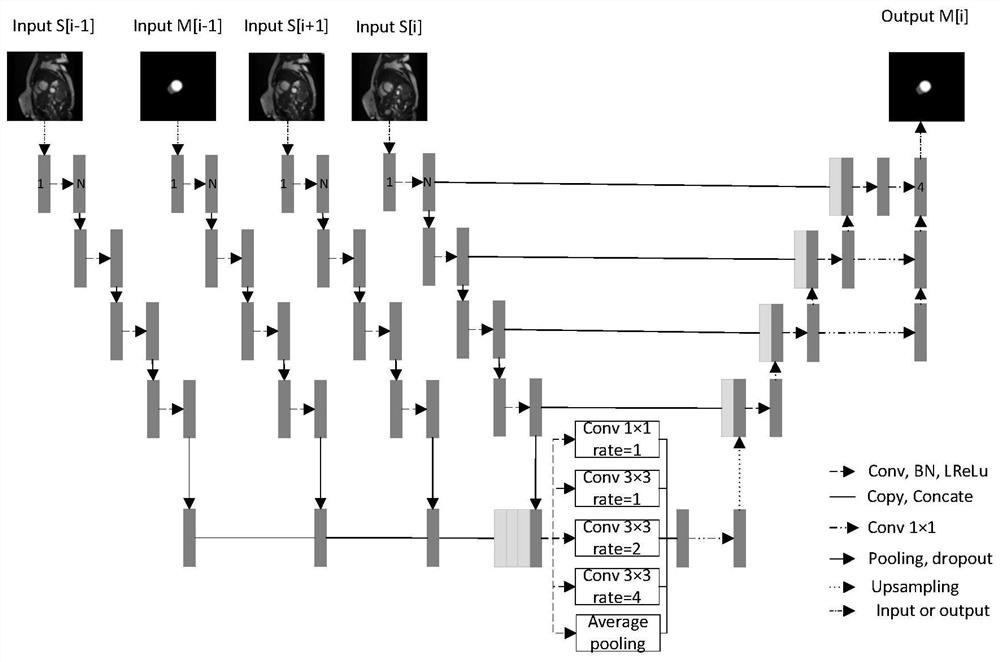Segmentation method of cardiac structure in MRI images based on multi-channel convolutional neural network
A technology of convolutional neural network and heart structure, applied in the field of medical image processing, can solve the problems of high computational cost, thick scanning layer, large spacing, etc., to achieve the effect of improving precision and accuracy, improving segmentation performance, and high computational cost
- Summary
- Abstract
- Description
- Claims
- Application Information
AI Technical Summary
Problems solved by technology
Method used
Image
Examples
Embodiment Construction
[0030] In order to make the object, technical solution and advantages of the present invention clearer, the present invention will be further described in detail below in combination with specific embodiments and with reference to the accompanying drawings. It should be understood that these descriptions are exemplary only, and are not intended to limit the scope of the present invention. Also, in the following description, descriptions of well-known structures and techniques are omitted to avoid unnecessarily obscuring the concept of the present invention.
[0031] The cardiac cine MRI image in the present invention refers to an image obtained by cardiac magnetic resonance cine imaging technology, which is a kind of cardiac MRI image.
[0032] The ASPP module in the present invention refers to a pyramid pooling module with dilated convolution.
[0033] Cardiac magnetic resonance cine imaging technology is a commonly used cardiac magnetic resonance imaging technology, which u...
PUM
 Login to View More
Login to View More Abstract
Description
Claims
Application Information
 Login to View More
Login to View More - R&D
- Intellectual Property
- Life Sciences
- Materials
- Tech Scout
- Unparalleled Data Quality
- Higher Quality Content
- 60% Fewer Hallucinations
Browse by: Latest US Patents, China's latest patents, Technical Efficacy Thesaurus, Application Domain, Technology Topic, Popular Technical Reports.
© 2025 PatSnap. All rights reserved.Legal|Privacy policy|Modern Slavery Act Transparency Statement|Sitemap|About US| Contact US: help@patsnap.com



